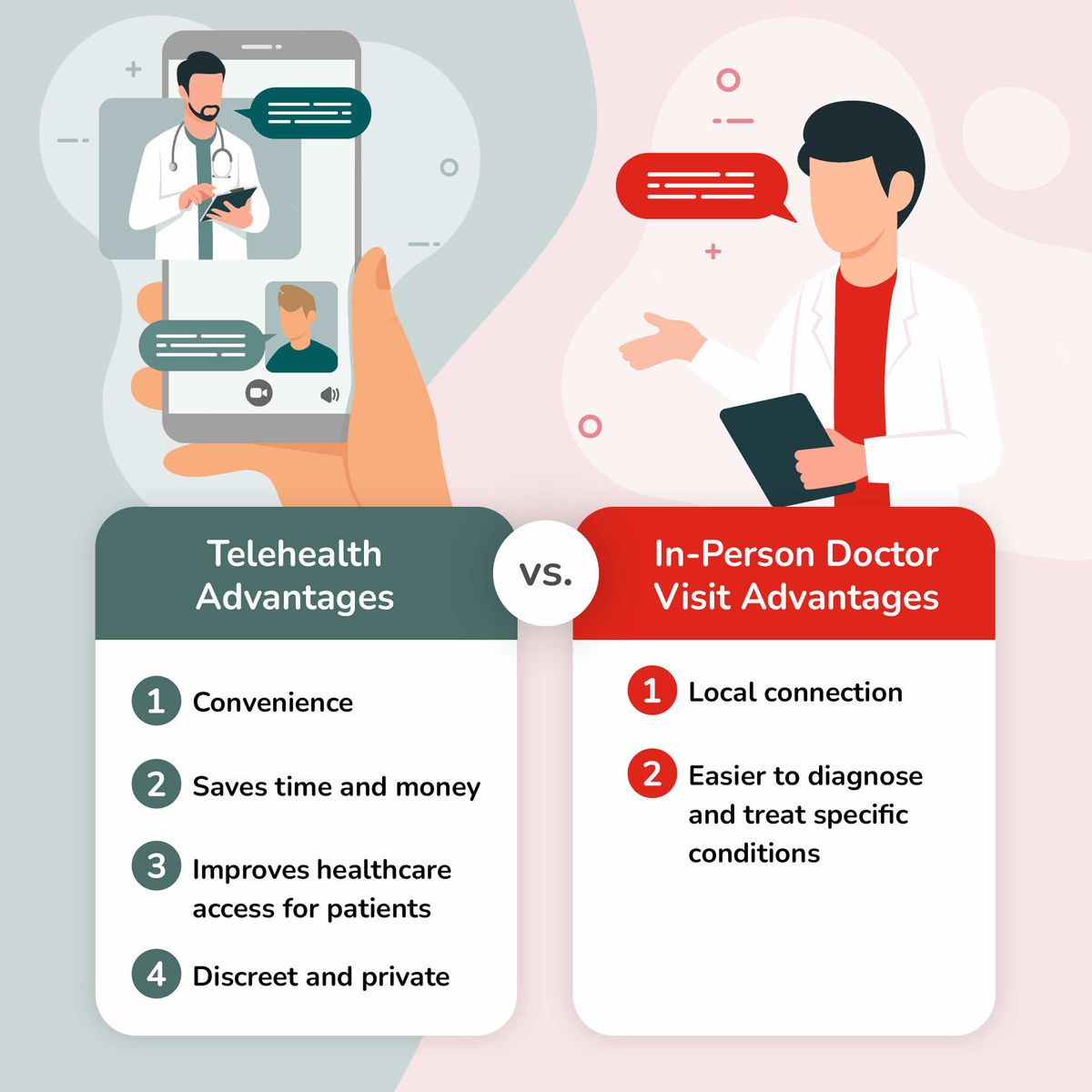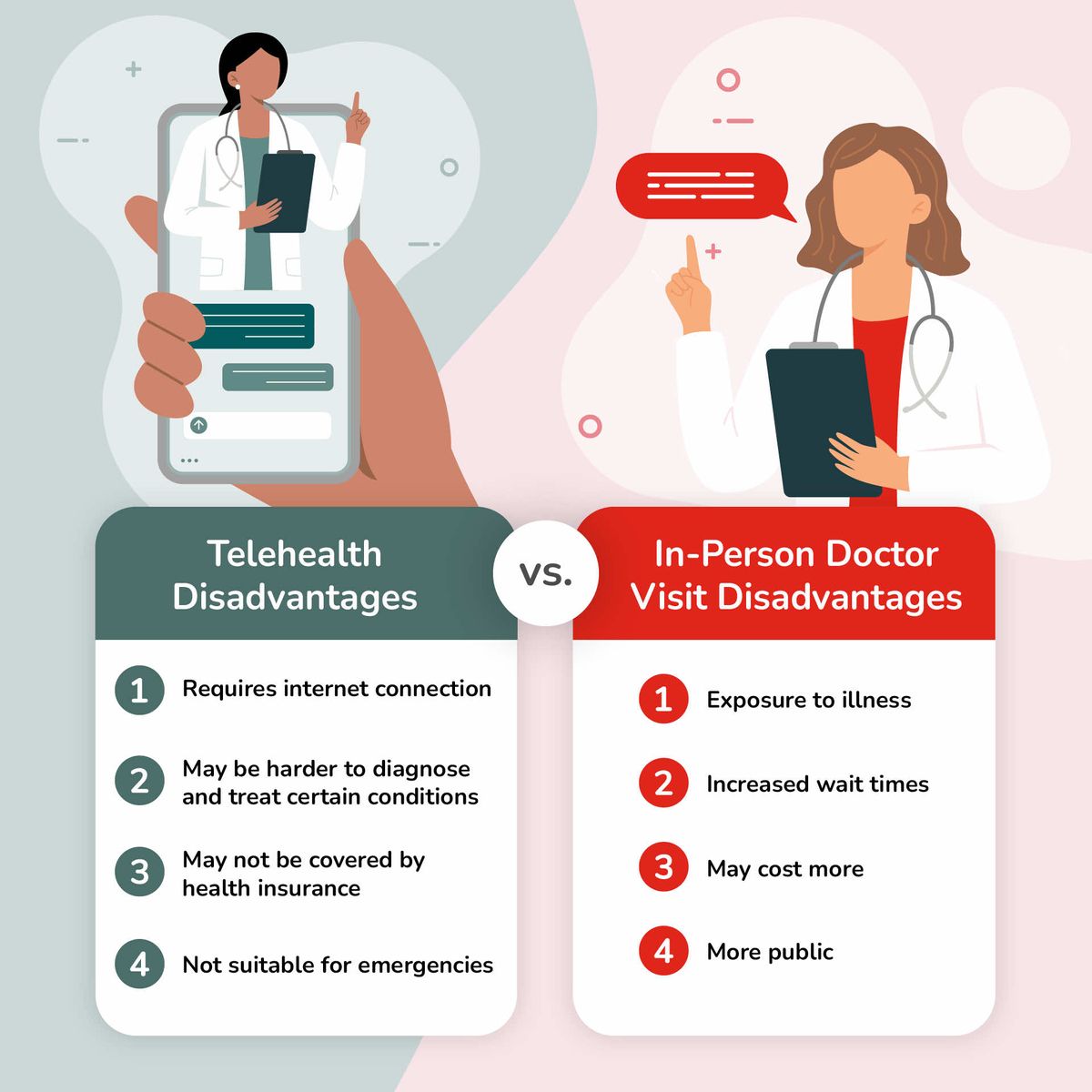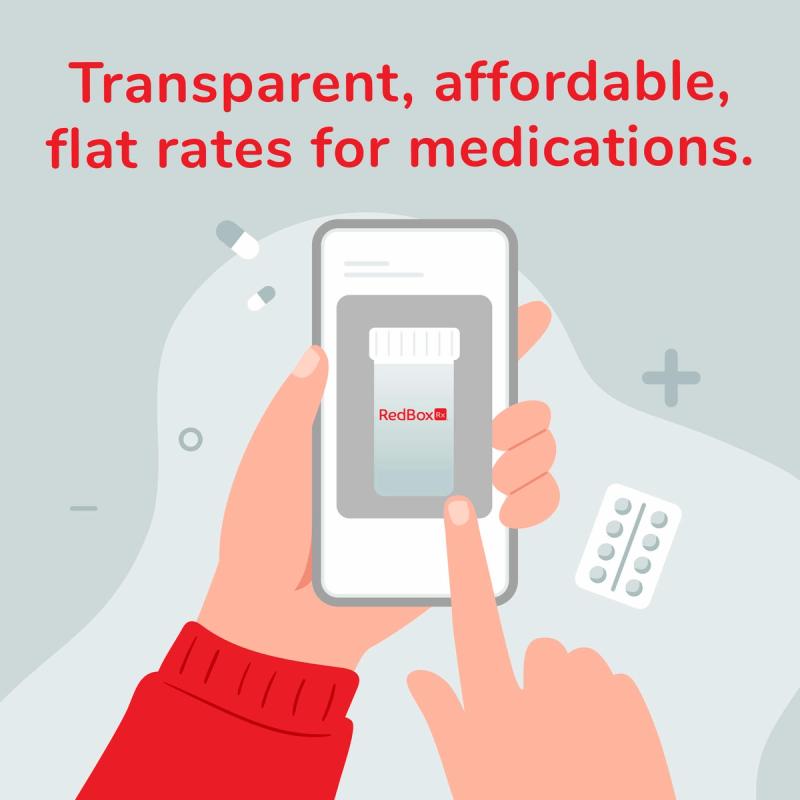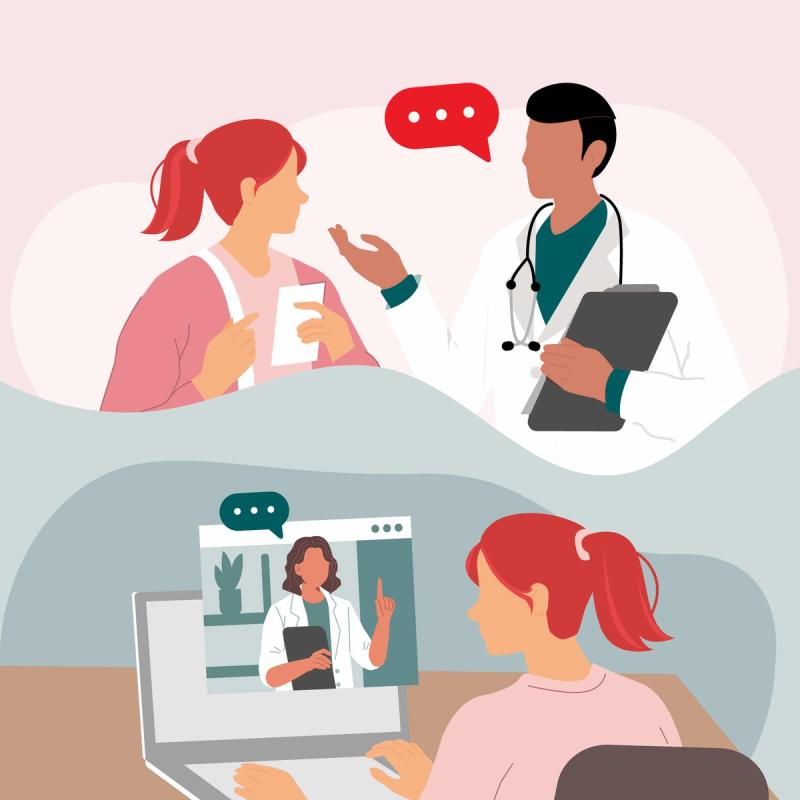In today's fast-paced world, the way we access health care services has evolved significantly, and one of the most notable changes has been the rise of telehealth. Research shows that 80% of consumers are interested in a telehealth or online pharmacy service like RedBox Rx.1
But how does it compare to in-person health care? Telehealth has opened access and created conveniences for the entire population. However, there are advantages and disadvantages to both telehealth and in-person health care, depending on your specific situation. Learn here about the pros and cons, so you can make an informed decision about what’s best for your health care.
Key Takeaways
Telehealth appointments are quick to schedule and often cost less than office visits. They eliminate travel and make prescription refills easy. It does require a reliable internet connection and is limited by state licensing rules.
In‑person care provides full physical examinations, immediate lab work or imaging, and procedures that are not possible virtually. The disadvantages include travel time, longer waiting periods and potentially higher out‑of‑pocket costs.
Research shows similar clinical outcomes and patient satisfaction when licensed clinicians follow evidence based protocols. Telehealth is not appropriate for medical emergencies or complex diagnostic cases.
Match the visit type to the health need. Use telehealth for follow-ups, medication management and minor ailments. Choose an in-person visit when you need hands-on evaluation, testing or urgent treatment.
What is Telehealth?
Telehealth is a service that provides access to health care professionals via an internet connection. It can be a live chat or a video appointment.2

Telehealth Advantages
The rise of telehealth providers has opened a new world of benefits and possibilities in health care. Telehealth's advantages include convenience, lower costs, less time investment, more privacy, and less exposure to illness, to name a few.
Convenience
Perhaps the biggest advantage of telehealth services is convenience. In fact, more than 84% of consumers in a telehealth survey said it would appeal to them to not have to leave the house when sick.3 You can access telehealth from anywhere in the world that has an internet connection.
Scheduling with telehealth platforms is often more convenient than traditional health care offices. You can typically schedule online with no phone call required. For many telehealth services, like RedBox Rx, you can often be seen immediately, or within the same day, by a licensed medical provider. Many conditions only require an asynchronous consultation, which means you can fill out an online assessment anytime and the provider reviews and prescribes treatment within a few hours. No direct contact needed.
Additionally, some mental health conditions like anxiety and depression make it difficult to leave the house to get treatment. Telehealth provides easier access for those individuals.
Saves time
Being able to access telehealth providers online saves time. There is no commute to an office and no waiting rooms. Generally, wait times for a telehealth appointment are significantly shorter than traditional health care. Many telehealth providers have same-day services. You may wait days, weeks or even months to see a traditional health care provider. On top of the commute to the office, you will likely spend time in the waiting room before your in-person appointment. With telehealth, you can log on at the appointment time and connect immediately with your provider.
Saves money
Telehealth has several advantages that save money. First, no travel is involved, which means no gas, no public transit costs and no lost wages from taking time off work.
Additionally, with many telehealth providers, the costs of consultations and prescriptions can be lower. Prices are generally more transparent with telehealth providers so you can understand your financial obligation before committing to treatment.
Improves health care access for patients
Not everyone has equal access to health care. In rural areas, the distance may be far to travel, or a patient may not have transportation to traditional health care. In urban areas, it can be difficult for some patients to get into a health care office because of transportation issues or finding time to take off work.
Telehealth solves these issues by connecting patients and providers online with no travel needed. This can be especially useful with specialty doctors or clinics, like mental health care providers, that may not exist within a patient’s geographical location.
Many telehealth providers can provide services at an affordable rate without insurance. This helps bridge the gap between the uninsured and health care treatment that could potentially be too expensive without insurance.
Less exposure to illness
When you go into a doctor’s office or a hospital, you expose yourself to people who might be sick and providers who interact with sick people daily. This increases the chances of contracting an illness from the health care provider’s office.
With telehealth, the online visit requires no physical contact and has no risk of transmitting disease between the provider, patient or other patients.
Discreet and private
Telehealth allows you to have a private connection with a medical provider in the location of your choice. If you have a condition that is sensitive, you may prefer the discreet option of telehealth over an in-person provider. This is especially true if you need services from a clinic that suggests a condition by its name, like an OB-GYN or a mental health clinic.
Telehealth allows you to be treated by a provider that doesn’t live in your community and offers privacy for conditions for which you may not feel comfortable getting treatment from your primary care provider. The discreet nature of telehealth also can be easier for anxious patients that struggle to make phone calls or talk openly in person as well.

Get Treated From the Comfort of Your Home
RedBox Rx is focused on improving healthcare access at affordable prices. We offer convenient online doctor consultations with fast, discreet shipping on medications to your door.
Create an AccountIn-Person Doctor Visit Advantages
There will always be a place for in-person doctor visits in health care. Compared to telehealth, in-person doctor visits do have advantages.
Local connection
Some patients prefer health care providers that are located within their community. It may help them relate to or understand the patient better. A local health care provider will also know of resources available in the area that a telehealth provider may not.
Easier to diagnose and treat specific conditions
Some conditions are easier to diagnose in person. Anything that requires a physical test, like an X-ray for example, can only be done in person. An in-person doctor is preferable in a medical emergency, as well when time and direct access are crucial.

Telehealth Disadvantages
Although telehealth offers a lot, there are some disadvantages to consider. Your specific needs may offer barriers to telehealth or extend beyond telehealth’s capabilities.
Requires internet connection
Telehealth requires an internet connection that may not be available to all people. Financial situations or geographical issues can limit a person’s access to reliable internet.
May be harder to diagnose and treat certain conditions
Telehealth has limitations when it comes to diagnosing some conditions. If any physical tests are required (blood tests, X-rays, CAT scans, vitals, etc.) to diagnose a condition, telehealth providers may be unable to treat that condition.
Some telehealth providers can process blood or swab tests via mail-in kits for a limited number of conditions. Many other diagnostic tests still need to be performed in person.
No physical presence may not be ideal for some patients
For some patients, communicating with a provider in person is preferred. The physical presence of the provider can be reassuring, and patients may feel more comfortable talking in that environment.
Also, some patients may struggle with the technological aspect of telehealth and feel more comfortable in the traditional setting of a doctor’s office.
May not be covered by health insurance
Health insurance may not cover telehealth services for some patients. Additionally, some telehealth providers do not accept insurance and all costs must be out of pocket.
Not suitable for emergencies or some conditions
In the case of an emergency, seek in-person health care. Diagnosis and treatment are time-sensitive in an emergency and should be handled by in-person medical professionals.
In the case of the following symptoms, dial 911 or an emergency number immediately:4
Choking
Stopped breathing
Head injury with passing out, fainting, or confusion
Injury to neck or spine, particularly if there is loss of feeling or inability to move
Electric shock or lightning strike
Severe burn
Severe chest pain or pressure
Seizure that lasted more than 1 minute or from which the person does not rapidly awaken
In the case of the following symptoms, go to an emergency department or dial 911:5
Trouble breathing
Passing out, fainting
Unusual or bad headache, particularly if it started suddenly
Suddenly not able to speak, see, walk, or move
Suddenly weak or drooping on one side of the body
Dizziness or weakness that does not go away
Inhaled smoke or poisonous fumes
Sudden confusion
Heavy bleeding
Possible broken bone, loss of movement
Deep wound
Serious burn
Coughing or throwing up blood
Severe pain anywhere on the body
Severe allergic reaction with trouble breathing, swelling, hives
High fever that does not get better with medicine
Poisoning or overdose of drug or alcohol
Seizures
Outside of emergencies, telehealth has limitations on the conditions it can treat. If in-person tests are required for diagnosis, telehealth would not be able to treat those conditions.
Limitations on controlled medications
There are laws regulating the types of medications that can be prescribed by telehealth providers. The laws vary by state and country, but for many areas, any medication that is classified as a controlled substance could be prohibited.
In-Person Doctor Visit Disadvantages
Part of telehealth’s rising popularity can be attributed to the disadvantages of in-person doctor visits. Depending on your personal health, you may want to consider the downsides of in-person appointments, including:
Exposure to illness
Increased wait times
May cost more
More public
Travel logistics
How RedBox Rx Can Help

RedBox Rx provides easy and affordable telehealth services for men’s health, women’s health, mental health, hair and skin, and primary care.
Benefits of RedBox Rx include:
Transparent, affordable, flat rates for medications.
Free or low-cost online consultations with a U.S. licensed medical professional.
No membership fees. No insurance required. FSA and HSA eligible.
Free shipping directly to you. Monthly and quarterly subscriptions available.
Create an account and start your treatment today with an easy, quick online assessment.


